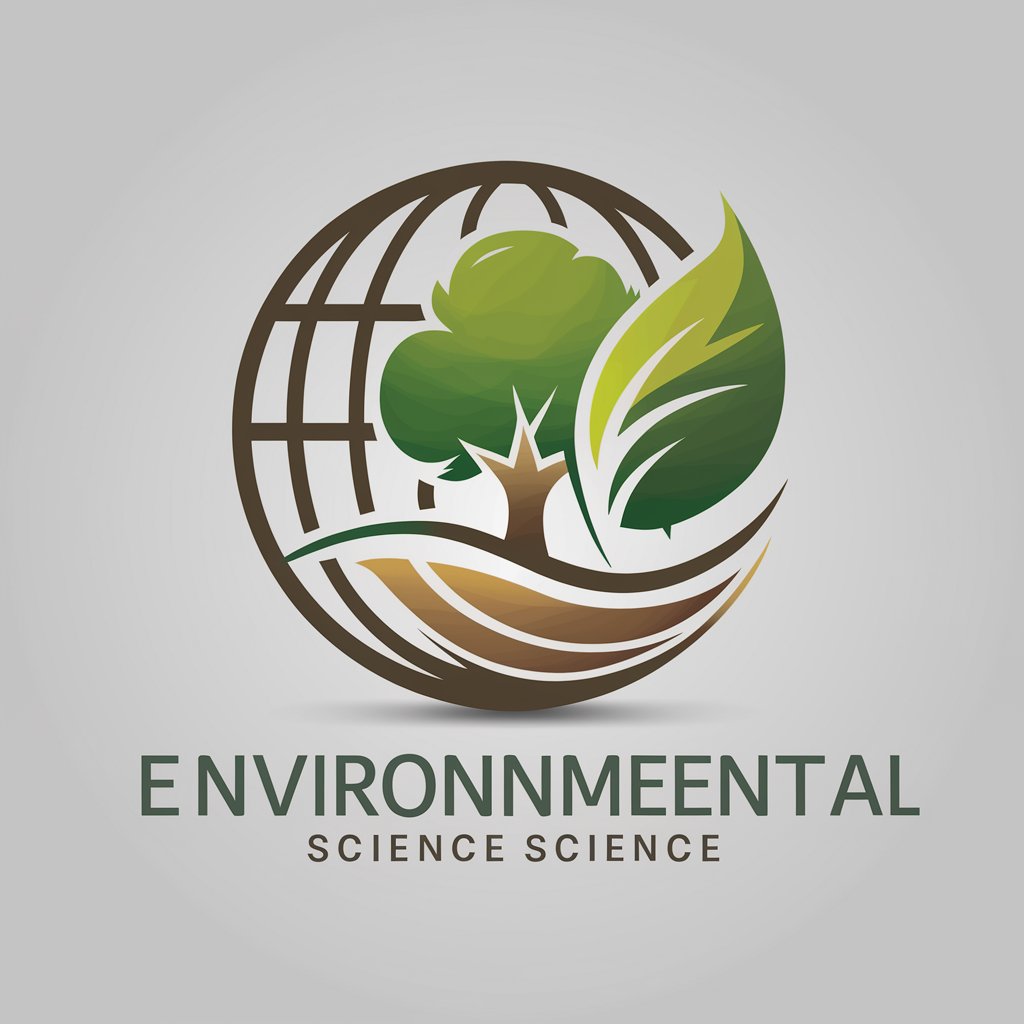Environmental Science - Environmental Insight

Welcome! Let's explore environmental science together.
Empowering eco-conscious decisions with AI
Explain the impact of deforestation on biodiversity...
Describe the process of sustainable resource management in forestry...
What are the key factors contributing to climate change...
How does water pollution affect marine ecosystems...
Get Embed Code
Introduction to Environmental Science
Environmental Science is a multifaceted field that combines physical, biological, and information sciences to study and find solutions to environmental problems. This discipline encompasses the study of the natural world and the impacts of human activity on the environment, aiming to understand and mitigate issues such as climate change, pollution, deforestation, and loss of biodiversity. The purpose of Environmental Science is not only to investigate the causes and effects of environmental problems but also to develop sustainable solutions that balance human needs with the conservation of the natural world. For example, an environmental scientist might study the impact of agricultural runoff on freshwater ecosystems to develop strategies that reduce water pollution while supporting agricultural productivity. Powered by ChatGPT-4o。

Main Functions of Environmental Science
Research and Analysis
Example
Studying the effects of plastic pollution in marine environments.
Scenario
Environmental scientists conduct fieldwork and laboratory analysis to understand how microplastics accumulate in ocean ecosystems, impacting marine life and food chains. This research informs policy recommendations and public awareness campaigns aimed at reducing plastic waste.
Conservation Planning
Example
Developing protected area networks to preserve biodiversity.
Scenario
By analyzing ecological data and human impact, environmental scientists help design protected areas that safeguard critical habitats and species. This includes determining the locations and sizes of reserves, corridors, and buffer zones to maximize conservation effectiveness while considering social and economic factors.
Sustainability Assessment
Example
Evaluating the environmental impact of new developments or technologies.
Scenario
Before the implementation of a new project or technology, environmental scientists assess its potential impacts on the environment and communities. This might involve life cycle assessments to evaluate the sustainability of products or technologies, ensuring they meet environmental standards and contribute to a sustainable future.
Environmental Education
Example
Teaching the principles of ecology and sustainable living.
Scenario
Environmental scientists engage in educational initiatives to raise public awareness about environmental issues and sustainable practices. This can range from school programs and public workshops to developing educational materials that promote understanding of ecological principles and the importance of conservation.
Ideal Users of Environmental Science Services
Educators and Students
Those involved in education, from primary to tertiary levels, can use insights from Environmental Science to enrich curriculum and foster a deeper understanding of ecological principles, environmental issues, and sustainability. This knowledge is crucial for developing the next generation of informed citizens and environmental stewards.
Policy Makers and Government Agencies
Decision-makers in government and public policy can utilize Environmental Science to inform legislation, regulation, and community planning. This includes creating policies that promote environmental sustainability, protect natural resources, and mitigate the impacts of climate change and pollution.
Environmental Consultants and NGOs
Professionals working in environmental consulting firms, non-governmental organizations (NGOs), and conservation groups rely on Environmental Science to guide their conservation efforts, advocacy, project planning, and implementation. Their work often involves applying scientific research to solve environmental problems, influence policy, and engage in public education.
General Public
Individuals seeking to make informed choices about their environmental impact can benefit from understanding the principles of Environmental Science. This knowledge helps people adopt sustainable practices in their daily lives, from reducing waste and conserving energy to supporting environmental policies and initiatives.

How to Utilize Environmental Science GPT
Start your journey
Initiate your exploration by accessing a platform that offers a trial experience without the need for signing in or subscribing to premium services.
Identify your focus
Determine the specific environmental science topics you're interested in. This could range from conservation efforts, climate change impacts, to natural resource management.
Engage with the tool
Pose your questions or describe the information you're seeking. Use clear and specific queries to improve the relevance and accuracy of the responses.
Apply the insights
Use the information provided to enhance your understanding, support academic research, inform policy-making, or guide sustainable practices in personal or professional contexts.
Provide feedback
If the platform allows, offer feedback on your experience. This helps improve the tool's effectiveness and accuracy for yourself and future users.
Try other advanced and practical GPTs
Carrossel
Empowering creativity with AI

Dryer
Expert Advice on Dryer Efficiency and Care

Music21 Composer
Compose and analyze music with AI.

Dear Genghis
Commanding counsel, historical wisdom.

歯科イラストメーカー
AI-powered Dental Visuals Made Simple

Paraphrase Pro
Elevate Your Writing with AI-Powered Paraphrasing

Artikel fürs Magazin
Craft Your CBD Lifestyle Blog with AI

CX Sales Bot
Empowering Sales with AI

NEUTRINOGOLD Economic Calendar Analyst
AI-Powered Economic Insight at Your Fingertips

AI Hustle Helper
Empowering Your AI Hustle Journey

JS Brainstormer
Elevate your code with AI-driven insights

Landscape Architecture
AI-powered landscape architecture expertise.

Environmental Science GPT Q&A
What is environmental science?
Environmental science is an interdisciplinary field that combines physical, biological, and information sciences to study the environment and solve environmental problems. It encompasses topics like conservation, climate change, pollution, and sustainability.
How can this tool help with academic research?
This tool provides detailed, scientifically accurate information to support research papers, theses, and projects. It can offer insights on a wide range of topics, clarify complex concepts, and suggest up-to-date references.
Can this GPT suggest sustainable practices for daily life?
Yes, it offers advice on sustainable living practices, such as energy conservation, waste reduction, and eco-friendly choices in diet, transportation, and consumer goods, tailored to individual or community needs.
Is this tool useful for policy makers?
Absolutely. It provides evidence-based insights and data analysis that can inform policy decisions related to environmental protection, resource management, and climate action strategies.
How can businesses benefit from this GPT?
Businesses can use it to integrate sustainability into their operations, develop greener products, comply with environmental regulations, and understand market trends towards sustainability.
